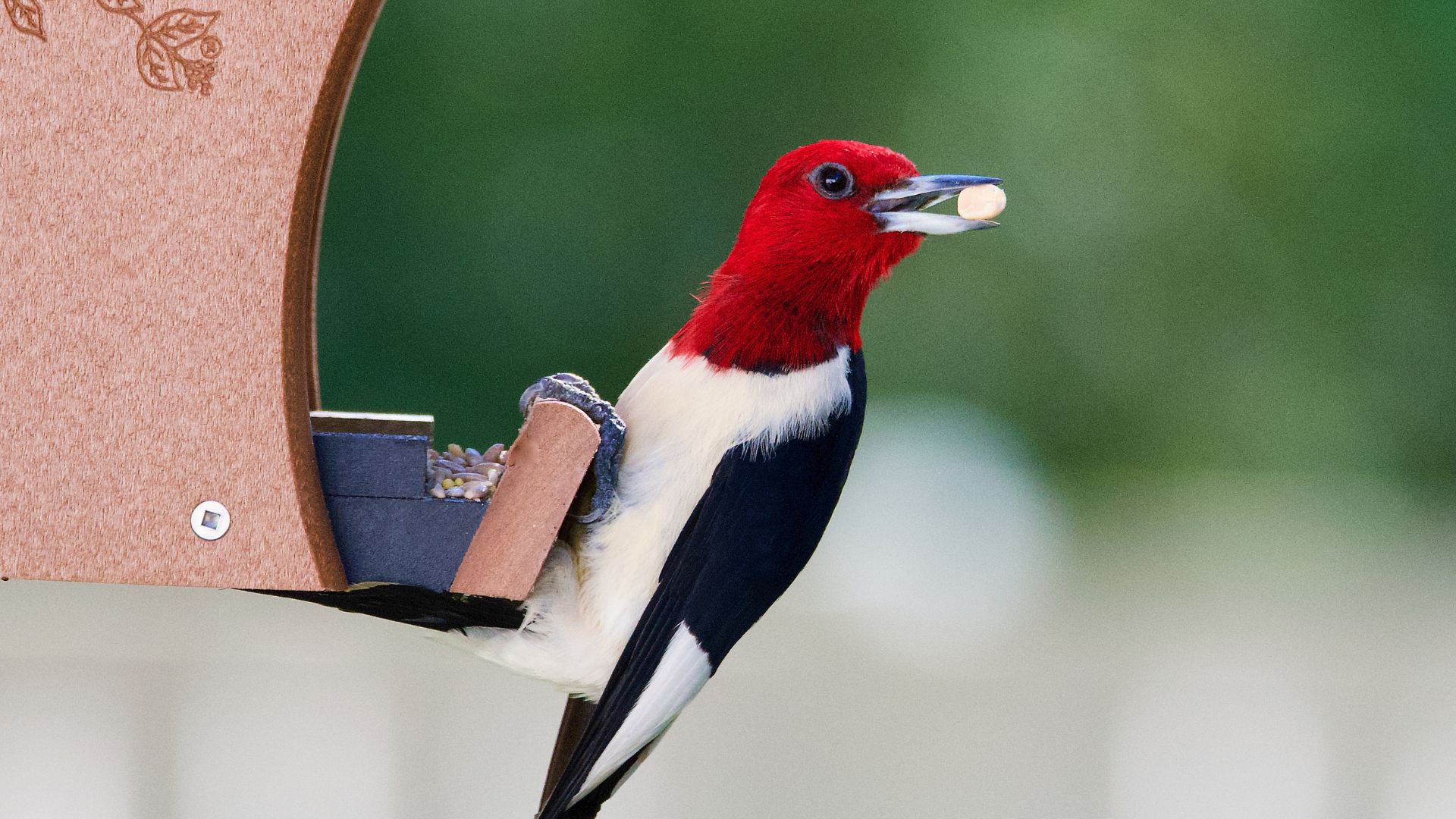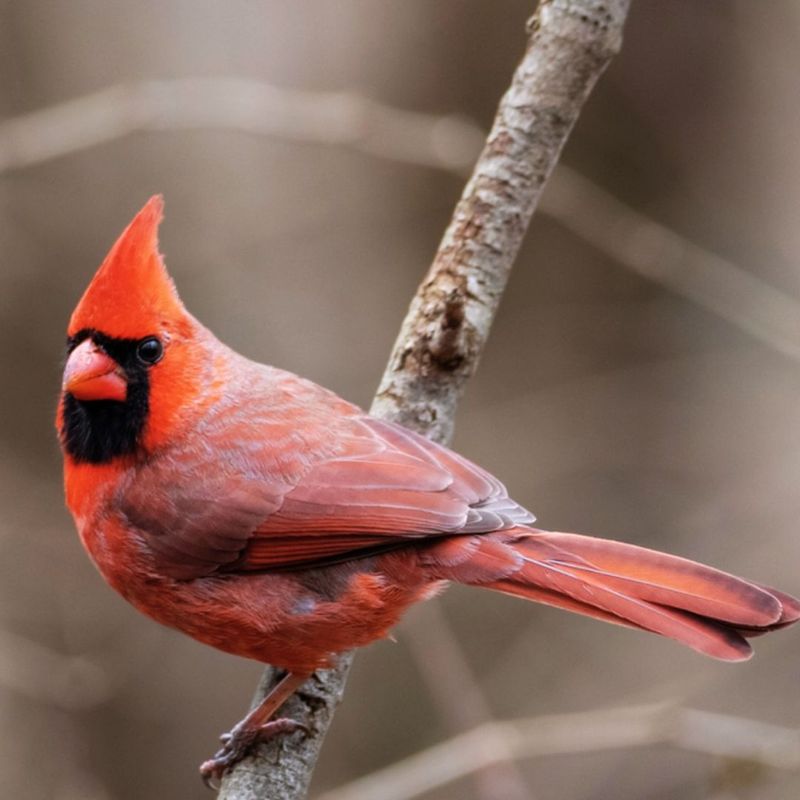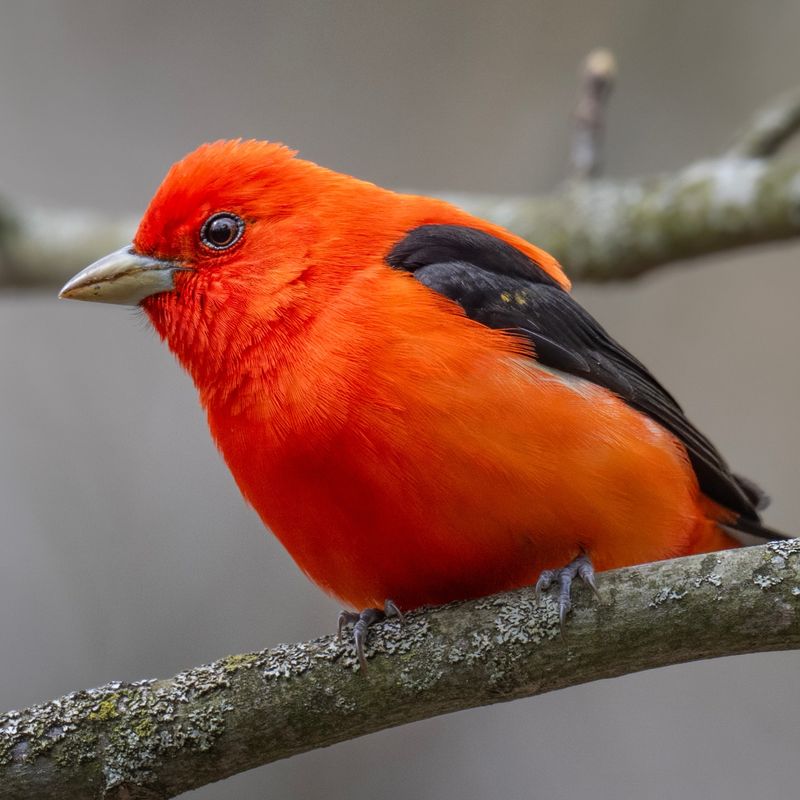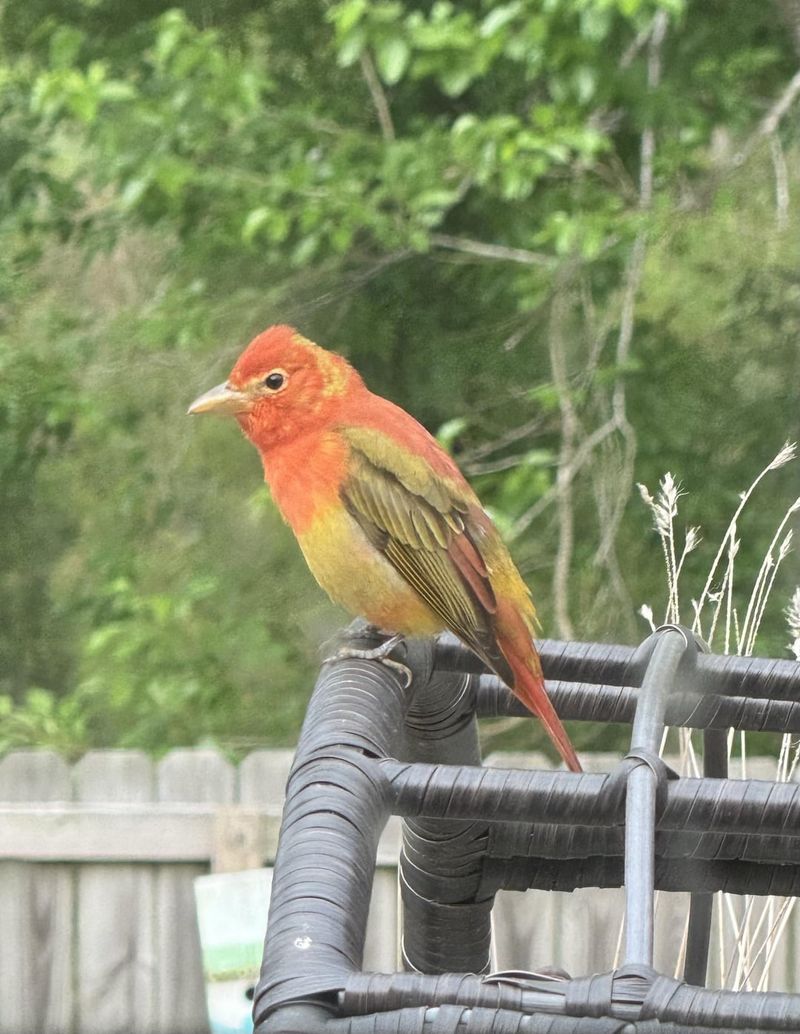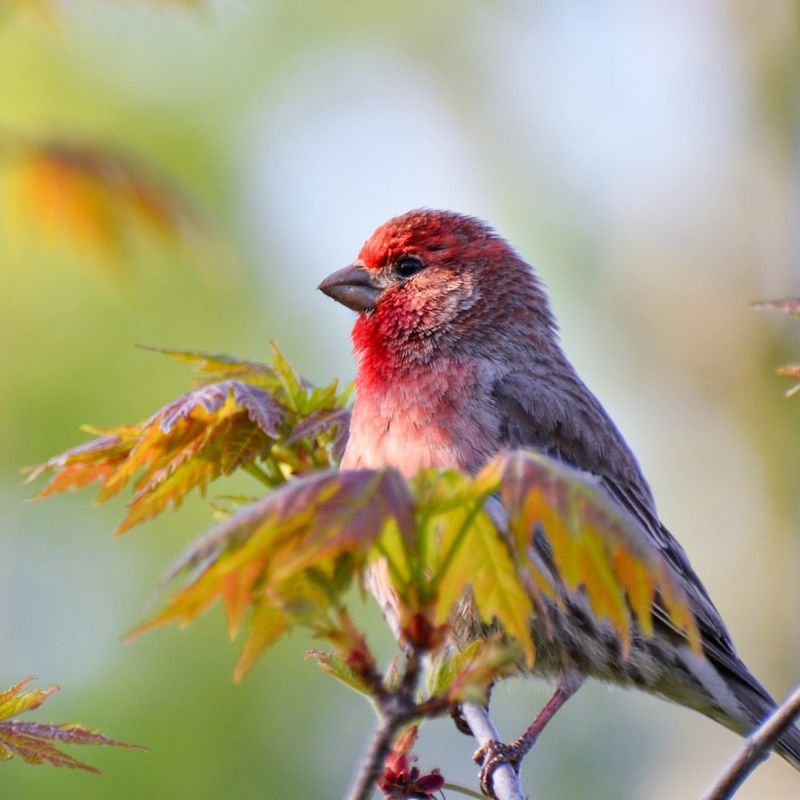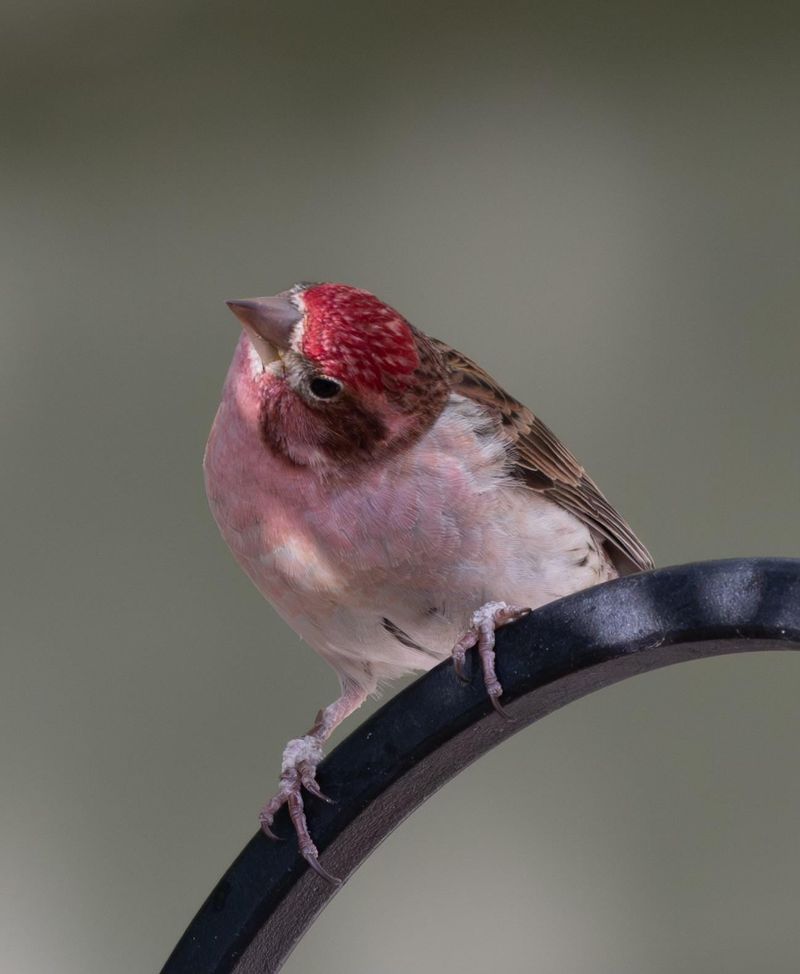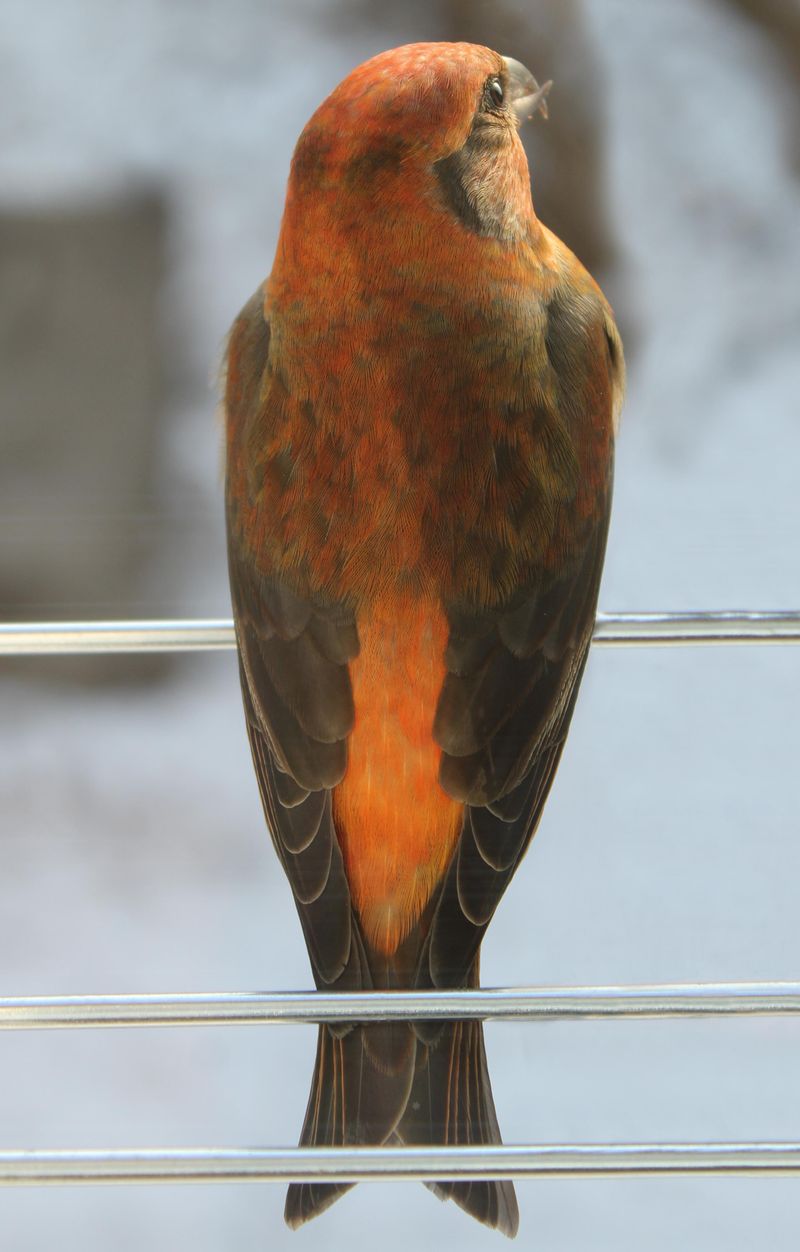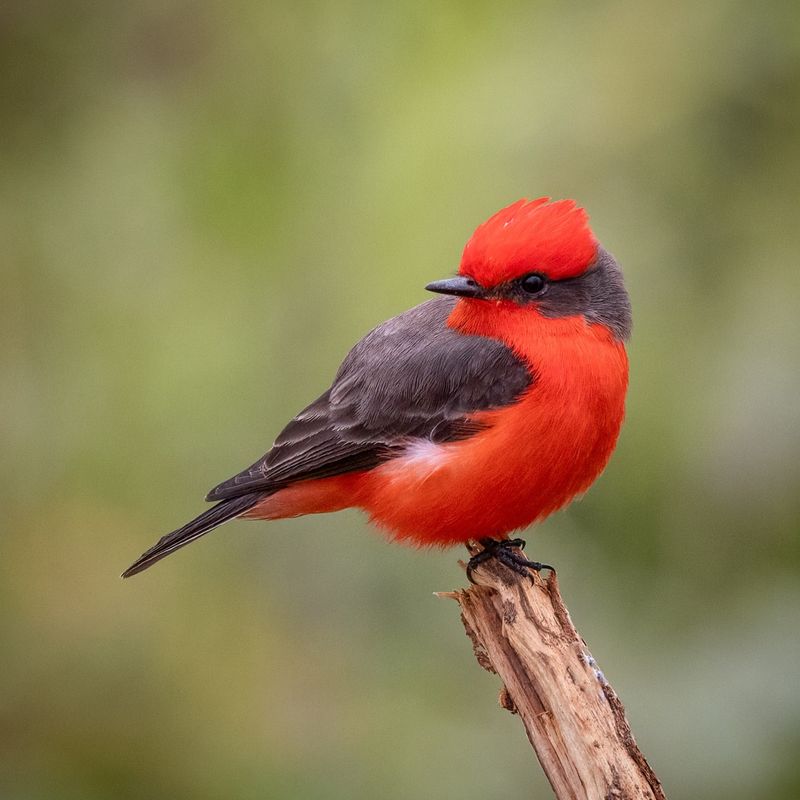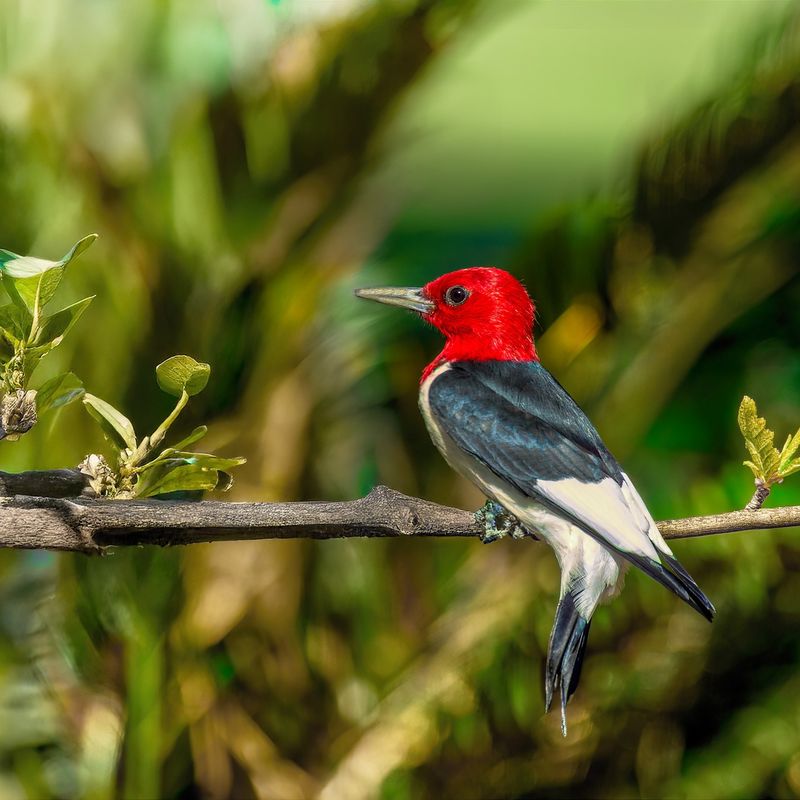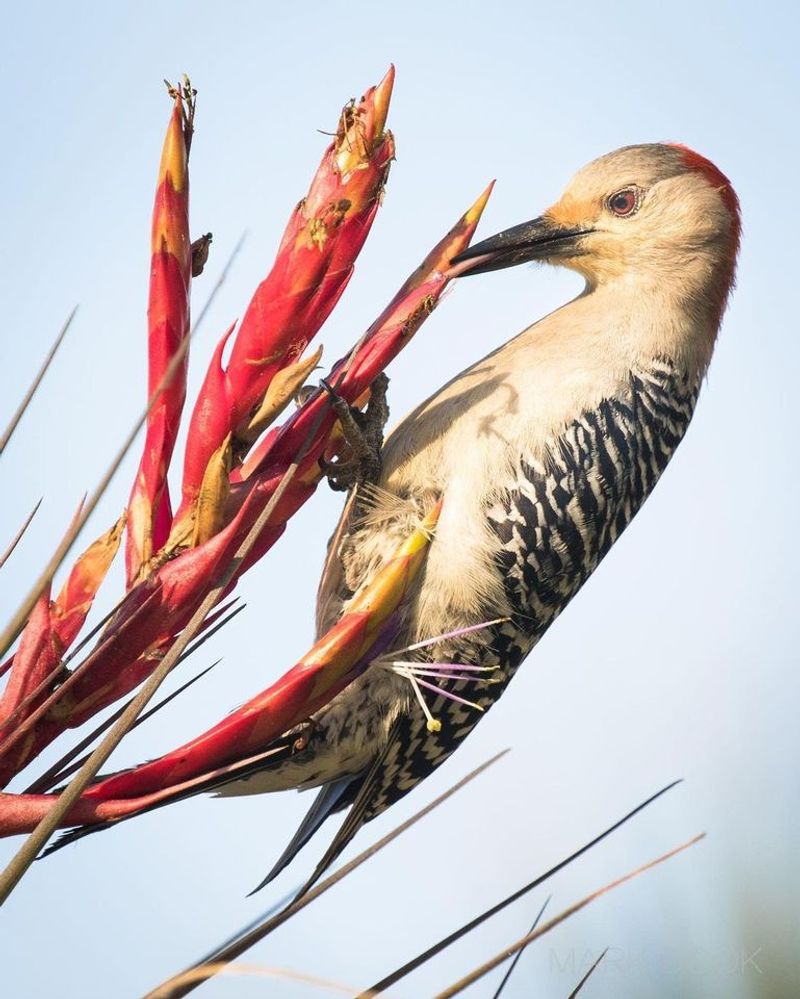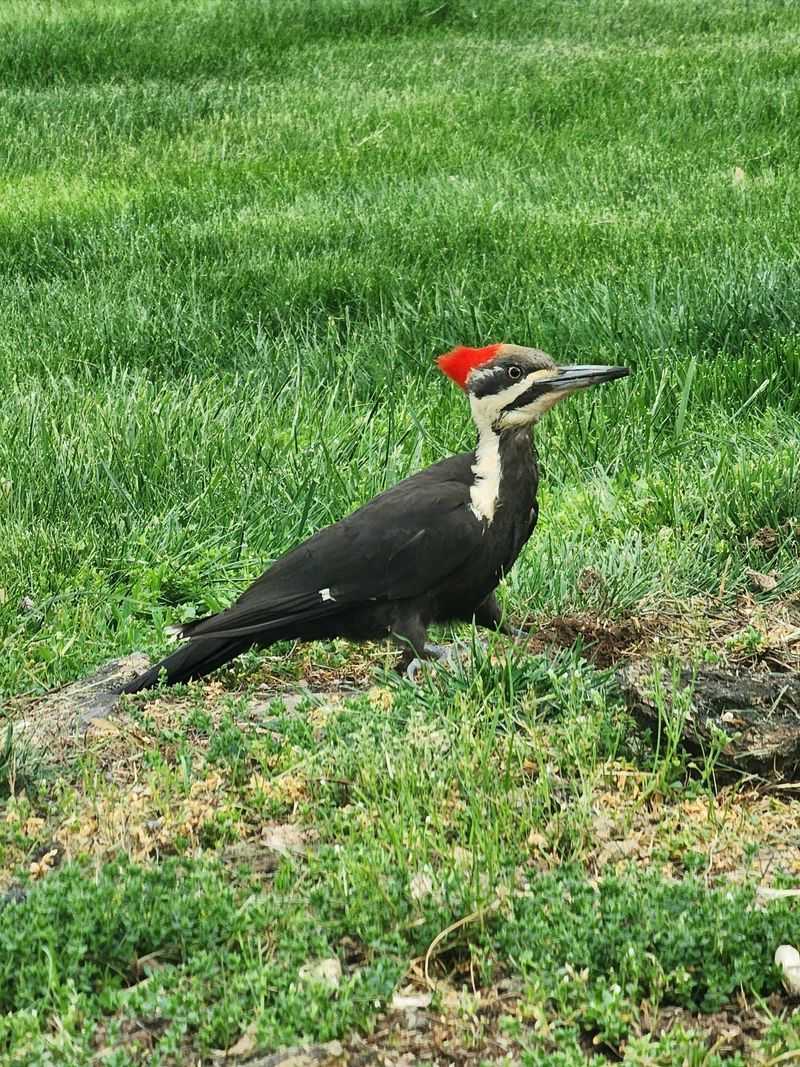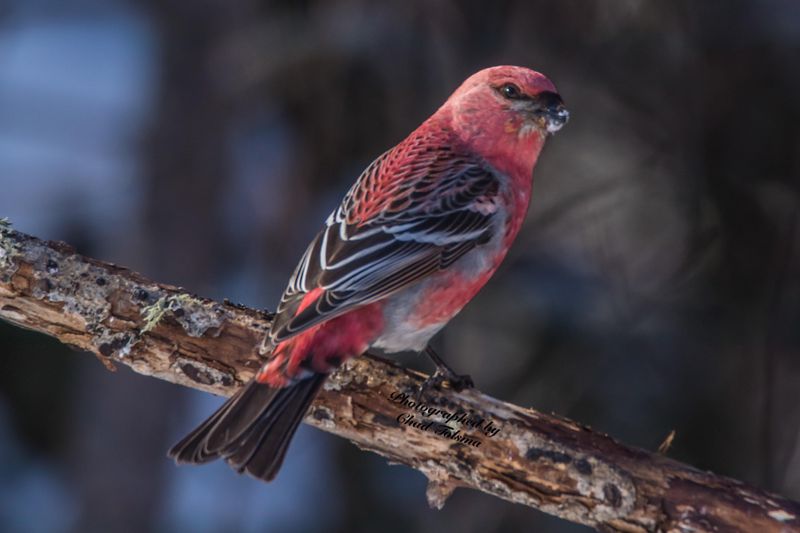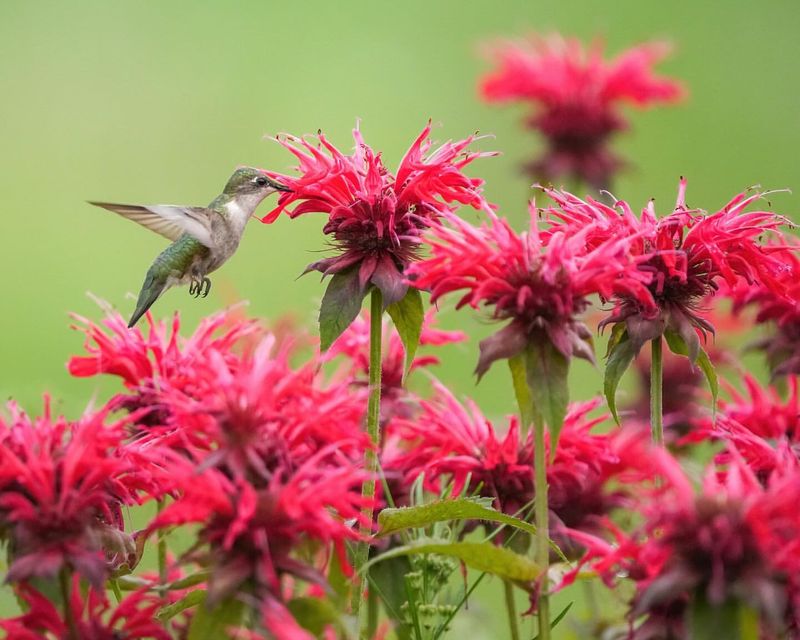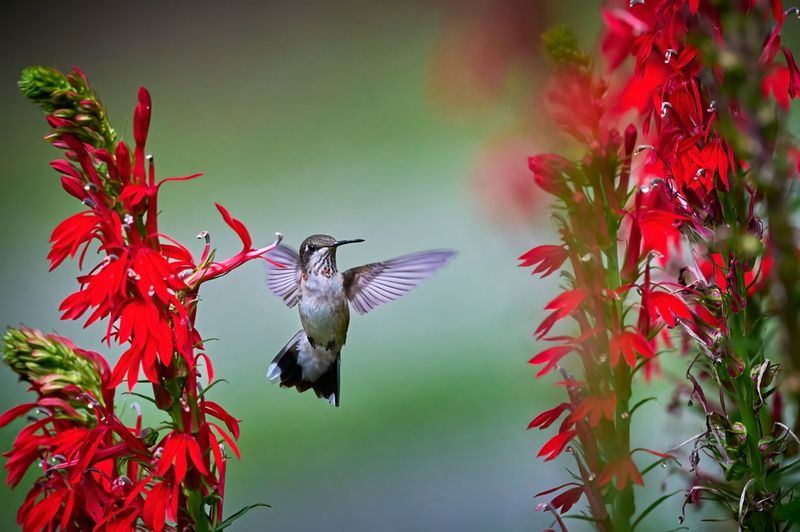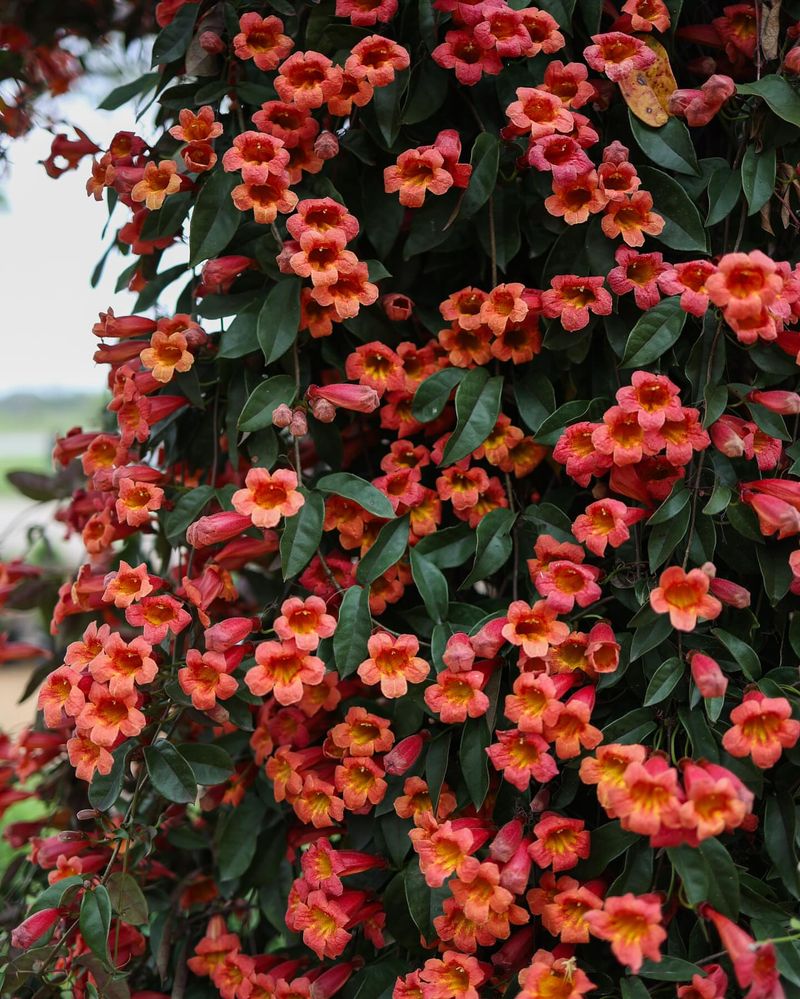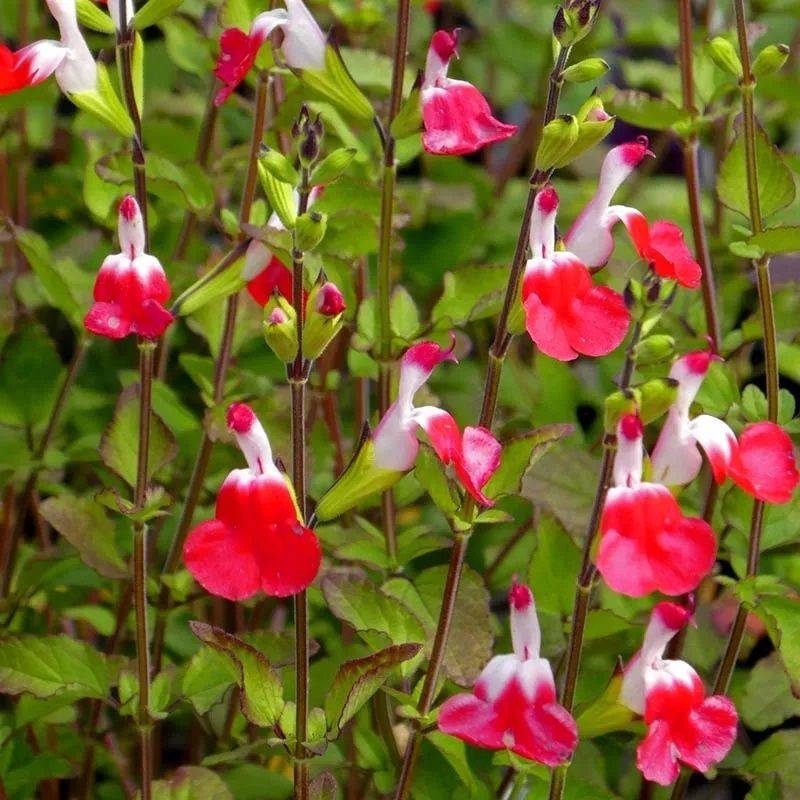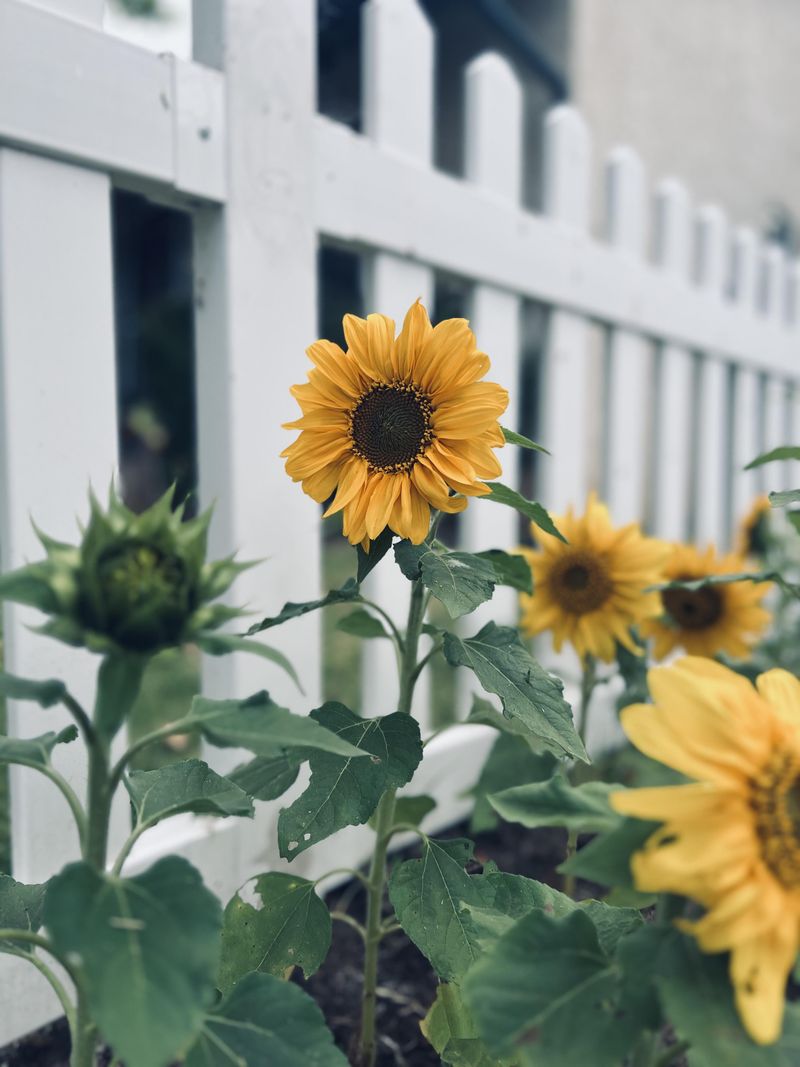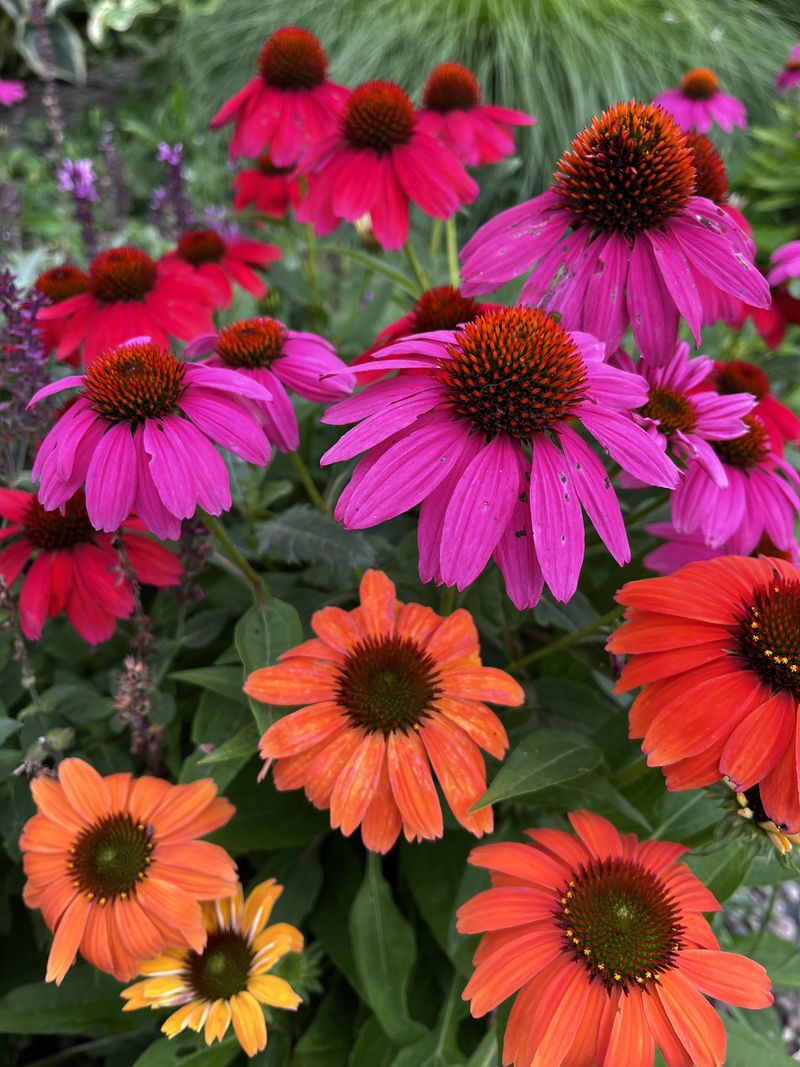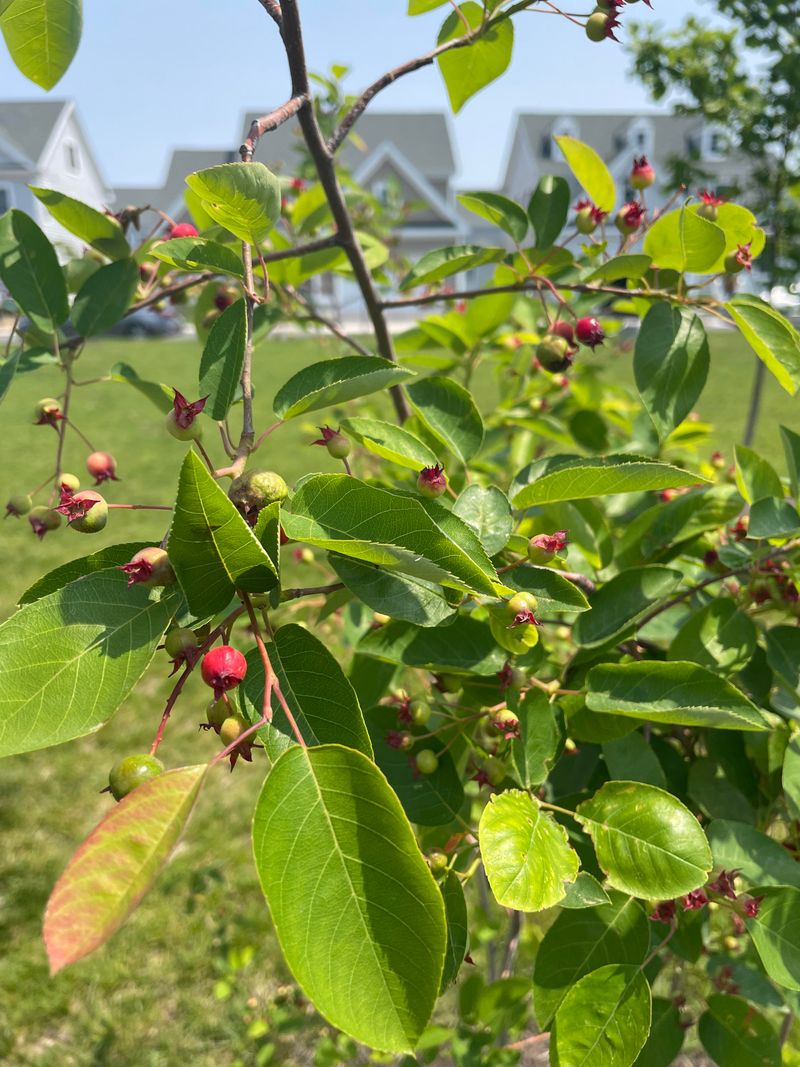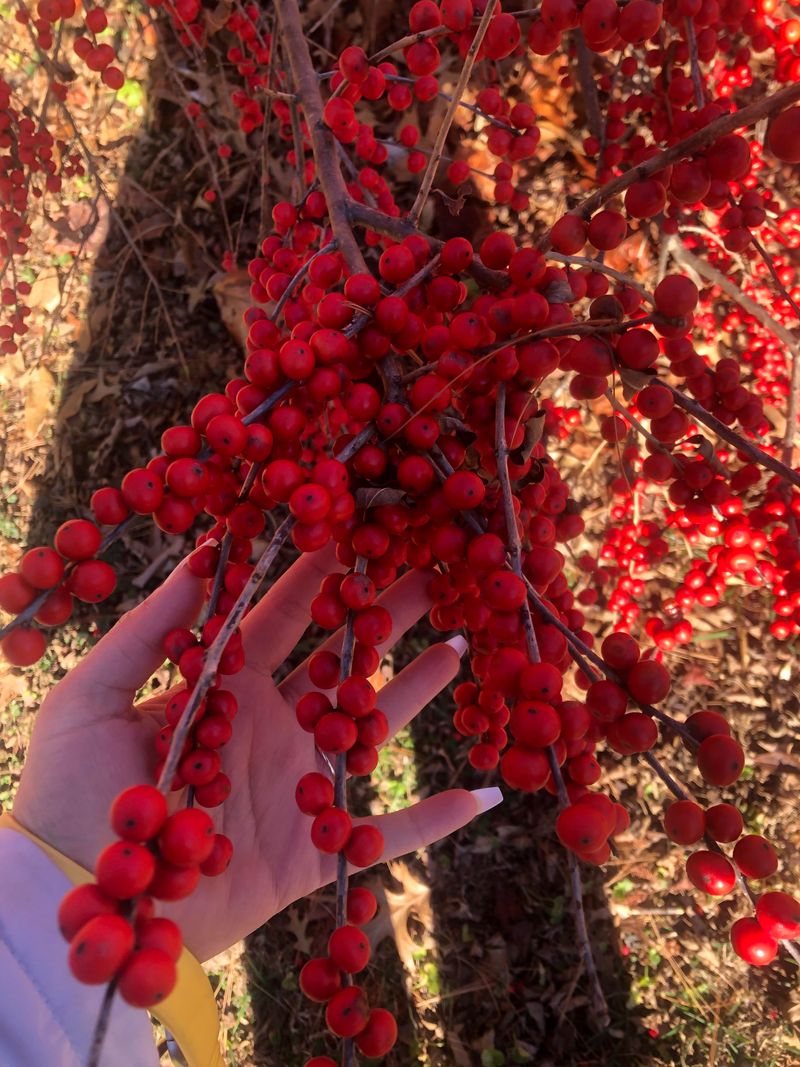Ever catch a flash of crimson darting through your garden? Red birds bring more than just color—they add energy, personality, and a dose of wild beauty. Their playful swoops and vibrant songs make any backyard feel alive.
Cardinals, tanagers, and other ruby-feathered guests are drawn to blooms like sunflowers, coneflowers, and bee balm. These plants offer both nectar and seed, turning your garden into a buffet with a view. It’s a feast for both birds and the eyes.
By planting strategically, you create a space that feeds the birds and nurtures your ecosystem. Your garden becomes more than decorative—it becomes a haven for wildlife and a joy for you year-round.
1. Northern Cardinal
Males sport brilliant crimson feathers that stand out against winter snow or summer foliage. Females have more subtle coloring with reddish accents on their crest, wings, and tail.
Cardinals don’t migrate, so they’re year-round garden residents. They travel in pairs and announce their presence with clear, whistling songs that sound like “purty-purty-purty” or “cheer-cheer-cheer.”
My backyard pair returns to the same feeding station every morning around sunrise, often the first visitors of the day.
2. Scarlet Tanager
Seeing one feels like winning the backyard lottery! Males flash fire-engine red bodies with jet-black wings and tails during breeding season, creating a dramatic contrast that catches the eye.
Despite their bright colors, these birds can be surprisingly hard to spot as they prefer the high canopy of deciduous forests. Their song resembles a robin’s but sounds hoarser, like they need a throat lozenge.
They only visit gardens with mature trees nearby, especially during migration or when fruit becomes available.
3. Summer Tanager
Unlike their scarlet cousins, male Summer Tanagers are completely rosy-red without black wings. They remind me of strawberry sorbet against a green backdrop of leaves.
These birds earn their nickname “beebird” by expertly catching bees and wasps mid-air, then rubbing them against branches to remove the stingers. Such impressive hunting skills for such a pretty bird!
Listen for their distinctive “pik-i-tuk-i-tuk” calls when they visit gardens with fruit trees or berry bushes during the warmer months.
4. House Finch
Male House Finches wear a raspberry-red wash across their heads, chests, and rumps that varies in intensity depending on diet. Some look barely pink while others seem dipped in cranberry juice.
Originally native to western North America, they’ve spread across the entire continent after being released in New York in the 1940s. Their cheerful warbling songs contain several phrases strung together, ending with an upward or downward slur.
These sociable birds often visit feeders in groups, bringing lively chatter to garden spaces.
5. Purple Finch
Despite their name, these finches look like they’ve been dipped in raspberry juice, not purple dye. Males show a deeper, more extensive red coloration than House Finches, covering their heads, backs, and undersides.
Their sweet, warbling song rises and falls in pitch, lasting about 2-3 seconds. One birdwatcher described it perfectly: “They sing like they’ve had voice training.”
Look for them at feeders during winter months, especially in northern gardens where they’re more common during cold-weather irruptions.
6. Red Crossbill
Their most distinctive feature isn’t their brick-red coloration but their uniquely crossed bill tips, which they use to pry open pine cones. Males display brick-red bodies while females show yellowish-olive coloring.
Garden sightings happen mainly during “irruption years” when pine cone crops fail in their northern territories. They’ll suddenly appear at feeders offering black oil sunflower seeds, often traveling in chatty flocks.
Last winter, a small group visited my garden for three days straight, working methodically through my pine trees before moving on.
7. Vermilion Flycatcher
Southwest garden owners might spot this jewel-like bird perched on exposed branches. Males sport a flaming red crown and underparts with contrasting brown-black upper parts and mask.
They hunt insects using a distinctive technique: perching in open areas, then flying out to snatch bugs mid-air before returning to the same spot. The name “flycatcher” perfectly describes their feeding style.
Their song consists of a rapid series of pit-pit-pit notes followed by a twittering trill, often delivered during short display flights.
8. Red-headed Woodpecker
Unmistakable with their entirely crimson heads contrasting against crisp black and white bodies. Adults of both sexes share this striking pattern, making them one of the few woodpeckers where males and females look identical.
Unlike most woodpeckers, they frequently catch insects in mid-air and store nuts and acorns in tree crevices for later. They’re quite vocal, making distinctive “queer” calls that carry across garden spaces.
Gardens with dead trees or wooden fence posts often attract these handsome birds, as they provide both food sources and nesting opportunities.
9. Red-bellied Woodpecker
The name misleads many gardeners—look for a zebra-backed woodpecker with a red cap (males) or red nape (females) rather than a red belly. The pale reddish wash on their lower bellies is often hard to see.
Their rolling “churr-churr-churr” calls announce their presence before you spot them. These medium-sized woodpeckers visit suet feeders regularly, bringing woodland charm to suburban gardens.
My neighborhood pair raised three youngsters last summer, teaching them to visit my suet station where they’d hang upside-down showing off their acrobatic skills.
10. Pileated Woodpecker
Crow-sized with flaming-red crests, these woodland giants create unmistakable rectangular holes in trees. Males have a red mustache stripe while females have a black one—a subtle difference on an otherwise dramatic bird.
Their wild, laughing calls and powerful drumming announce their territory. Lucky gardeners near wooded areas might attract them with suet feeders, especially during winter months.
Gardens bordering forests have the best chance of visits, particularly those with mature trees, fallen logs, or stumps where carpenter ants—their favorite food—might live.
11. Pine Grosbeak
Males wear a rosy-red coat that looks like they’ve been dusted with raspberry powder, while females show yellowish-olive coloring. Their chunky bodies and thick beaks help them handle tough seeds and winter buds.
Northern gardeners might spot these gentle giants during winter when they venture south in search of food. They move slowly through trees and shrubs, methodically picking at seeds and fruit.
Last February, a small flock spent an afternoon in my crabapple tree, carefully eating the frozen fruits while softly whistling to each other.
12. Common Redpoll
These small finches sport raspberry-red patches on their foreheads and (in males) rosy-pink washes on their chests. They’re winter visitors to southern gardens, arriving from the far north when food becomes scarce.
Watch for their acrobatic feeding style—they often hang upside-down from branches or seed heads. Their constant activity and cheerful calls bring life to winter gardens.
One snowy morning last year, my feeders hosted over thirty redpolls, all chattering and jostling for position like tiny, energetic holiday ornaments with wings.
13. Bee Balm
Native Americans used this plant medicinally long before gardeners discovered its bird-attracting powers. The shaggy, crown-shaped red flowers produce nectar that draws hummingbirds from surprising distances.
Growing in upright clumps 2-4 feet tall, bee balm creates dramatic summer displays while spreading through underground rhizomes. The aromatic leaves smell minty when crushed—a bonus feature beyond its bird appeal.
Plant it where you can watch from a window, as hummingbirds will visit repeatedly throughout the day, especially during morning hours.
14. Cardinal Flower
Named for its color matching Northern Cardinals, this native wildflower produces intense red tubular blooms on tall spikes. The flowers appear in late summer when many other plants have finished blooming.
Growing naturally along stream banks, cardinal flowers appreciate consistently moist soil in garden settings. Their nectar-rich blooms particularly attract hummingbirds, whose long bills perfectly match the flower shape.
My patch started with three plants five years ago and now forms a stunning late-summer display that brings hummingbirds right up to my patio.
15. Trumpet Vine
Nicknamed “hummingbird vine” for good reason—its orange-red tubular flowers seem designed specifically for these birds’ feeding habits. The trumpet-shaped blooms cluster along vigorous climbing vines that can reach 30-40 feet.
Consider its aggressive growth habit before planting. One gardener told me: “I planted it once, and I’ll be removing it forever.” Choose a sturdy support structure well away from buildings.
Morning sun produces the most flowers and attracts the most birds, particularly during July and August when blooms peak.
16. Salvia ‘Hot Lips’
This perennial salvia produces bicolor red and white flowers that resemble tiny painted lips. The unusual blooms appear from early summer until frost, providing a long-lasting nectar source.
Hummingbirds visit these flowers repeatedly throughout the day, while the aromatic foliage naturally repels deer and rabbits. The plants form neat, rounded bushes about 2-3 feet tall and wide.
Unlike some salvias that struggle in humidity, ‘Hot Lips’ performs well across different climate zones, making it accessible to most gardeners.
17. Sunflowers
Beyond their cheerful yellow faces, sunflowers offer something valuable to red birds—nutritious seeds packed with oils and proteins. The large seed heads become natural feeding stations in late summer and fall.
Finches particularly love sunflower hearts, clinging to the ripening heads and extracting seeds with their specialized beaks. Plant multiple varieties for an extended harvest period.
Leave the dried flower heads standing through fall instead of deadheading—they’ll attract finches, cardinals, and grosbeaks when natural food sources diminish.
18. Coneflowers
After their purple summer blooms fade, coneflowers develop prominent seed heads that become bird feeding stations. The seeds attract goldfinches primarily, but red finches and cardinals also visit regularly.
Native to North American prairies, these drought-tolerant perennials need minimal care once established. Their sturdy stems hold seed heads upright even through snow, providing winter food when birds need it most.
My garden beds feature coneflowers specifically positioned where I can watch winter birds feeding from my kitchen window.
19. Serviceberry
This multi-season small tree offers spring flowers, summer berries, and fall color. The sweet blue-black fruits ripen in June (earning the nickname “Juneberry”) and attract numerous birds, including tanagers and grosbeaks.
Cedar waxwings often strip a serviceberry tree clean in a single day, but patient gardeners might spot red birds taking their share. The berries resemble blueberries but grow directly on woody stems.
Plant where fallen fruits won’t stain patios or walkways, as birds will inevitably drop some while feeding.
20. Winterberry Holly
Unlike traditional hollies with evergreen leaves, winterberry drops its foliage to reveal spectacular bright red berries that persist through winter. The leafless branches loaded with fruit create a dramatic winter landscape.
Cardinals particularly favor these berries during late winter when other food sources have been depleted. You’ll need both male and female plants to produce berries—one male can pollinate several females.
Plant where you can enjoy the winter display from indoors, as the bright berries against snow create a living holiday decoration.

